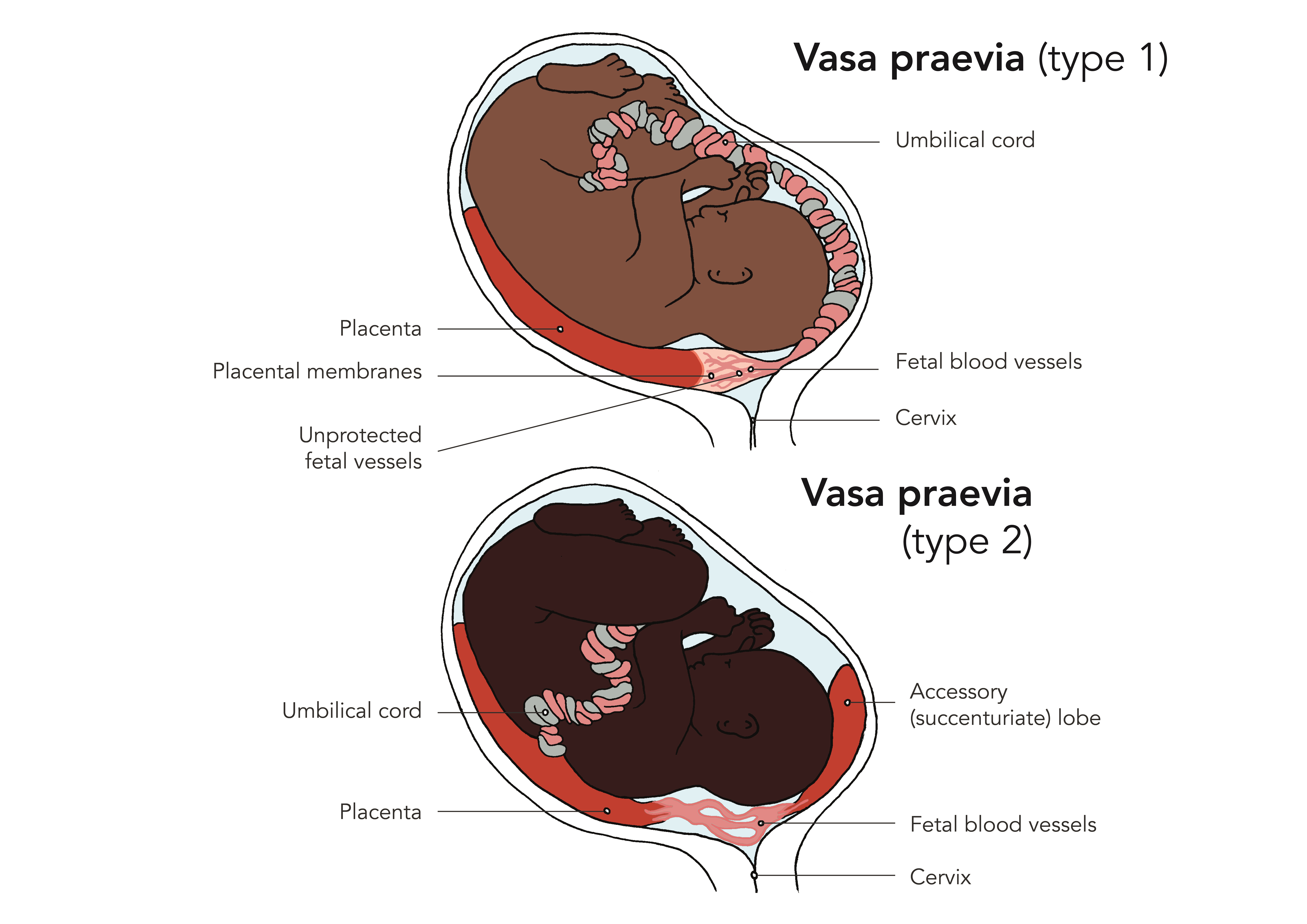Vasa Praevia
Vasa Praevia
Vasa praevia is a very rare condition affecting between 1 in 1200 and 1 in 5000 pregnancies. It is where fetal blood vessels travelling from your baby to your placenta, unprotected by placental tissue or the umbilical cord, pass near to the cervix. These blood vessels are very delicate and can tear when you are in labour or when your waters break. This is very dangerous as the blood that is lost comes from your baby. Babies only have a small amount of blood in their bodies so they don’t need to lose much to become very unwell or even die. Up to 6 in 10 affected babies can die if this happens.
There are 2 types of vasa praevia: Type 1 is associated with a single placental mass. Type 2 vasa praevia consists of a main placental mass, and a second placental lobe call the accessory lobe. The 2 lobes are joined by fetal blood vessels.

If your healthcare professional suspects that you may have vasa praevia when you go into labour or when your waters break, your baby needs to be born urgently. Usually an emergency caesarean would be recommended.
If your placenta is low, if you are carrying more than one baby or if your placenta or umbilical cord develops in an unusual manner, you are at higher risk of having vasa praevia. You may be offered an extra scan during your pregnancy to check whether you have this condition.
If you are found to have vasa praevia before you go into labour, you should be offered a planned caesarean at around 34–36 weeks of pregnancy. As this would mean that your baby is being born preterm, you would be offered a course of steroids (two injections, 12–24 hours apart) to help mature your baby’s lungs and other organs. See the RCOG patient information Corticosteroids in pregnancy to reduce complications from being born prematurely.
